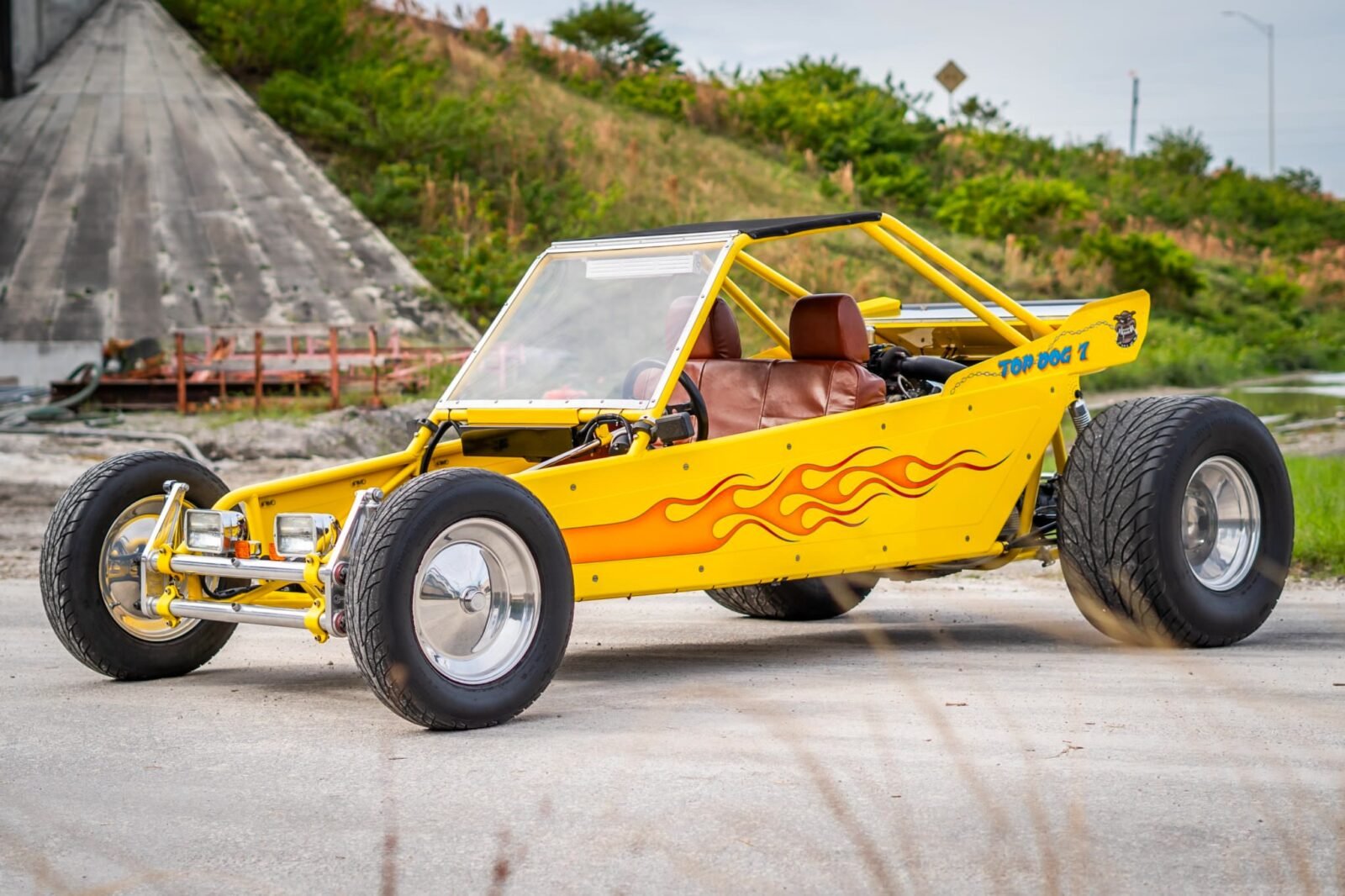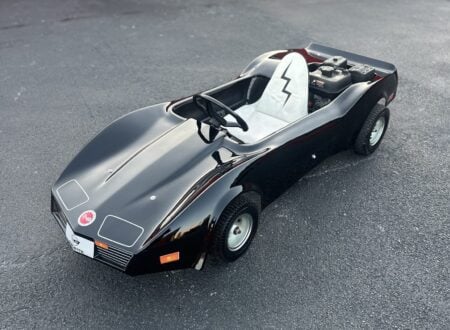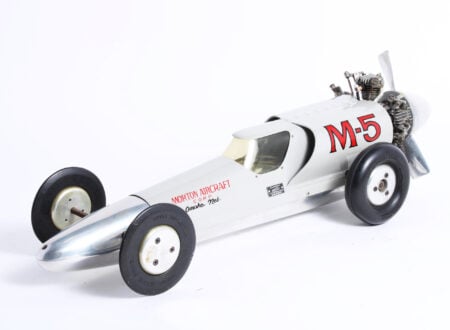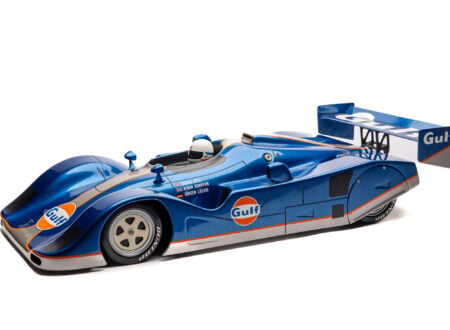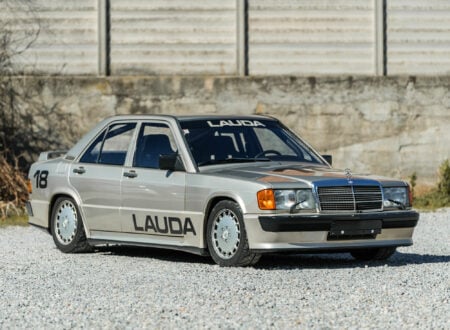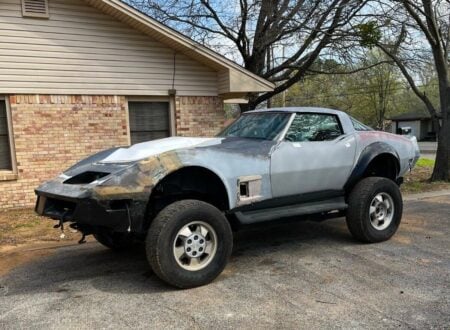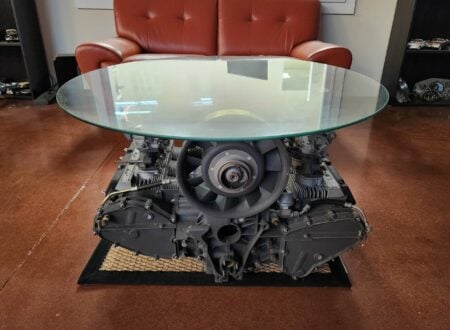On a pound-for-pound basis, this is likely one of the most entertaining cars we’ve ever featured on Silodrome. It weighs in at just 1,150 lbs and it’s powered by a custom-built, 2.3 liter, 300+ bhp flat-four VW engine.
Street rails are the less-common siblings of sand rails – tube framed dune buggies often used for racing. Sand rails first became popular in the 1960s, it wasn’t long before people started building road legal versions called street rails which are analogous in some respects to cars like the Caterham 7 and Ariel Nomad.
Fast Facts – A California Street Rail With 300 BHP
- The street rail is a custom-built vehicle type that is a direct descendant of the sand rail dune buggies that first rose to prominence in Southern California in the 1950s and 1960s. Street rails, and the sand rails they’re based on, typically have tubular steel frames, little-to-no bodywork, seating for two or four, exposed wheels, and very low curb weights.
- The first sand rails began to emerge in the 1950s, often based on production car chassis that had their original bodies removed for weight savings. Steel roll bars were sometimes welded into place, and these were among the first dune buggies.
- By the time the 1960s rolled around it was possible to buy fully welded tubular steel sand rail chassis and then fit them out with the engine, suspension, seating, etc of your choice. Many companies that made these chassis kits advertised in the back of the motoring magazines of the time.
- The street rail you see in this article is a road-legal vehicle that was built by Emil Miller Fabrication in Grand Terrace, California. It’s powered by a 2.3 liter 300+ bhp VW flat-four with a turbocharger, and it’s said to have a curb weight of just 1,150 lbs. It’s now being offered for sale out of Lauderhill, Florida with a clean Florida title.
A History Speedrun: Sand Rails + Street Rails
Sand rails are an early species of dune buggy that rose out of the sun-drenched primordial soup of the 1950s Southern California desert racing scene. The earliest sand rails were essentially built from a production car chassis with the body removed, and some tubular steel welded on to provide some protection while keeping weight to a minimum.
Above Video: This is a short video produced by Bullet Motorsports about the street rail shown in this article. It includes a detailed description and some driving footage, which shows just how much fun this thing is to drive.
It wasn’t long before the production car chassis was left out of the equation altogether, with full custom tubular steel chassis welded up on dedicated jigs. These chassis often had Volkswagen suspension added front and rear, as it was cheap and easy to find, and it offered independent front and rear suspension that could take a beating.
The VW parts catalogue was further raided with many sand rails also using the simple air-cooled flat-four engine and 4-speed manual transaxle.
Though they had been developed by Ferdinand Porsche as the people’s car (famously at Hitler’s request), a simple and German cheap commuter car, the VW Beetle would become the backbone of the American desert racing scene, providing the platform for many sand rails as well as Baja Bugs and Meyers Manx dune buggies.
It’s important to note that not all sand rails were VW powered, some had front-mounted engines with a few examples having small block V8s sending borderline obscene amounts of power to the rear wheels. Many builders did prefer rear-mounted engines as it kept the weight over the driven wheels, and provided a rear-weight bias that helped to avoid nose-diving into the sand when jumping over dunes.
Once sand rails became popular it wasn’t long before people started adding lights, street tires, lower suspension, and getting them road registered. These vehicles became known as “street rails” for obvious reasons, and they offered one of the purest on-road driving experiences you can have, with very little mass, an excellent power-to-weight ratio, and true wind-in-your-hair driving.
Street rails never became quite as popular as their off-road brethren, but they did offer a convenient way of getting to and from the dunes without needing a trailer and a tow vehicle.
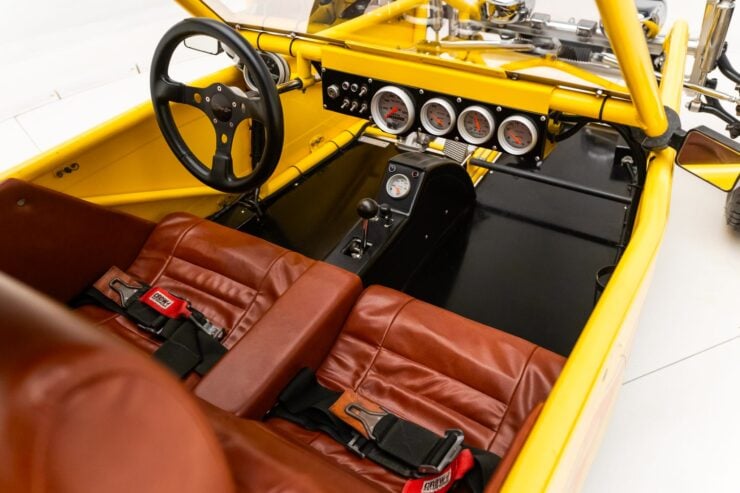

The Turbocharged “Street Rail” Shown Here
The vehicle you see here is a street rail that was built by Emil Miller Fabrication in Grand Terrace, California with a yellow tubular steel spaceframe chassis, slab-sides made from sheet metal, and a removable back roof section.
Power is provided by a recently rebuilt 2.3 liter VW flat-four. This engine has a SCAT aluminum block, barrels, and cylinder heads as well as an aftermarket camshaft, dual valve springs, and Bugpack pistons and connecting rods.
It’s now fitted with a turbocharger, a Holley carburetor, a PerTronix Compu-Fire ignition system, a Precision wastegate, a high-torque starter, a Holley electric fuel pump, and a high-volume oil pump.
It rides on polished 15″ staggered wheels with Mickey Thompson tires front and back. The independent four-wheel suspension uses of Marvin Shaw fully-adjustable coilovers, and it has cross-drilled disc brakes, though only in the rear. The reason it only has brakes in the rear is that when the front end lifts up under heavy acceleration, you still have braking ability.
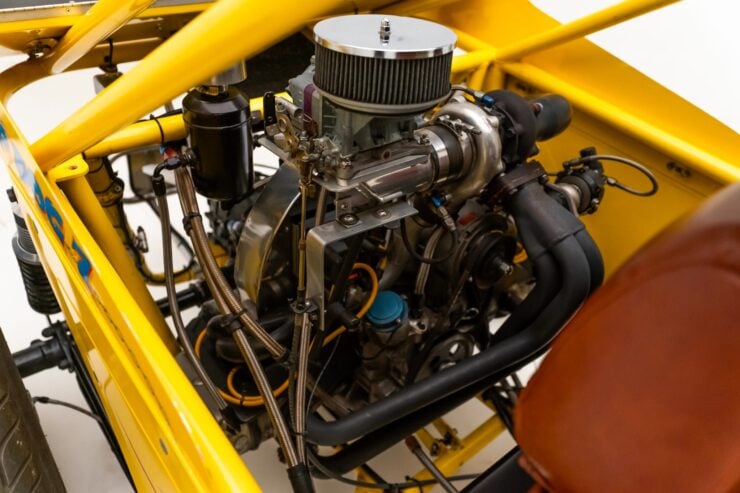

Inside you’ll find two seats upholstered in brown vinyl, a leather-wrapped steering wheel, Crow Enterprizes latch-and-link lap belts, and a fire extinguisher in the passenger footwell. It has a slew of gauges to help you keep tabs on the vital stats, and there’s a 4-speed shifter mounted in the center console.
The car is now being offered for sale on Bring a Trailer out of Lauderhill, Florida with a clean Florida title, it’s registered as a 1968 Volkswagen van. If you’d like to read more about it or register to bid you can visit the listing here.
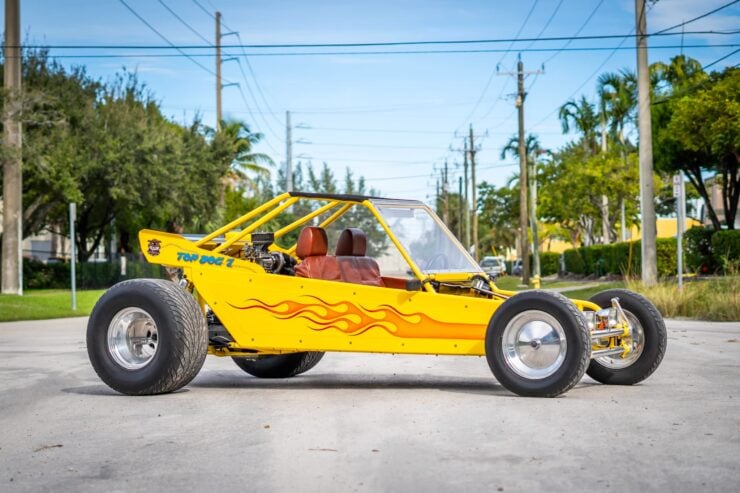
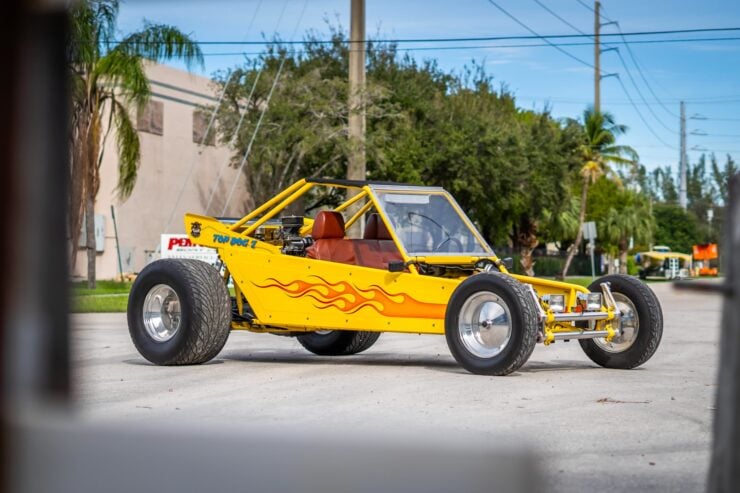
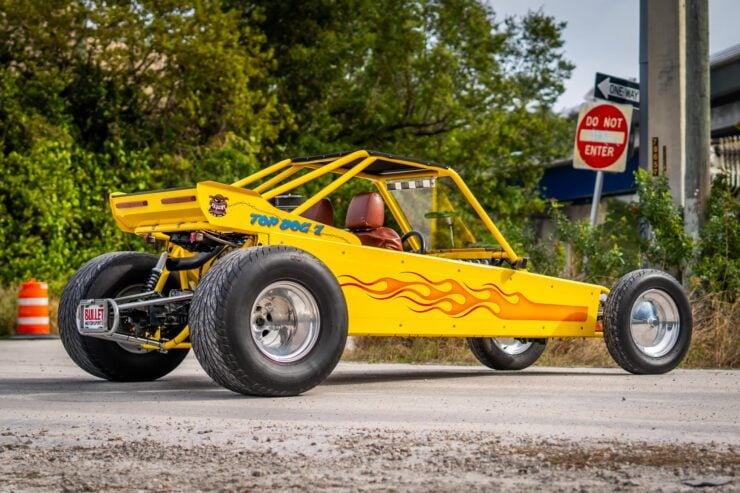
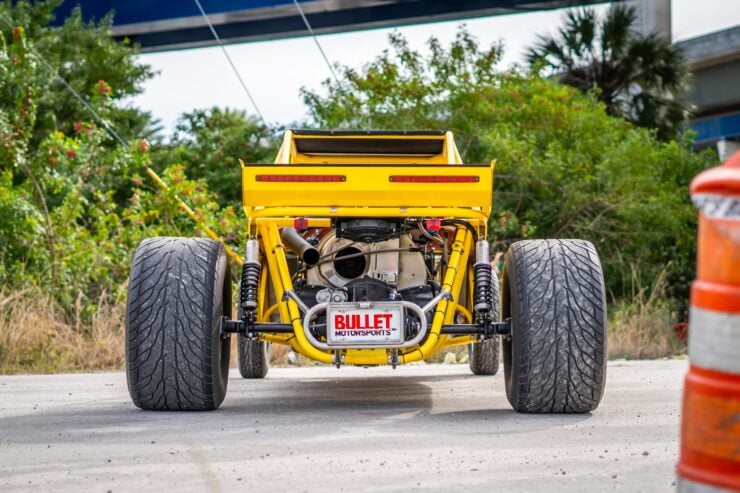
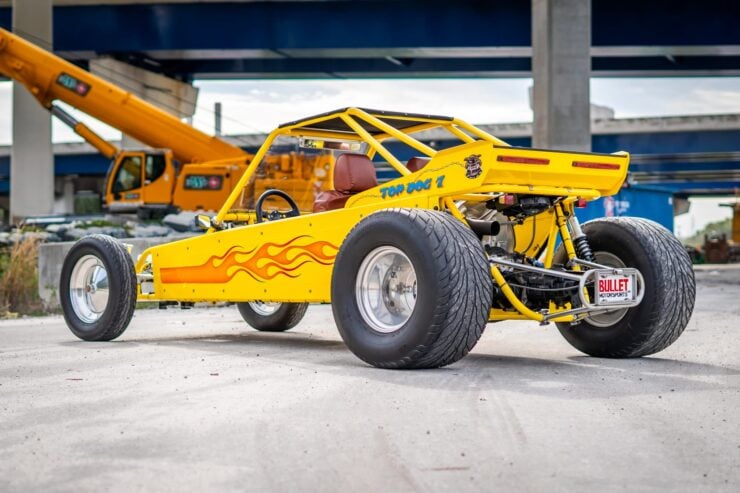
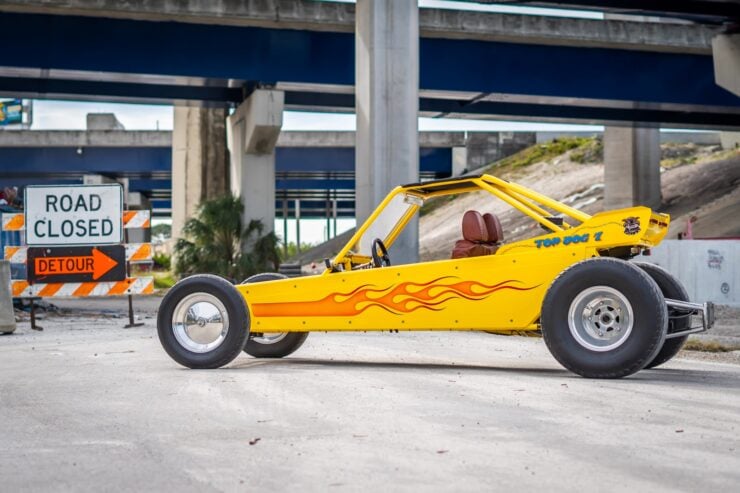
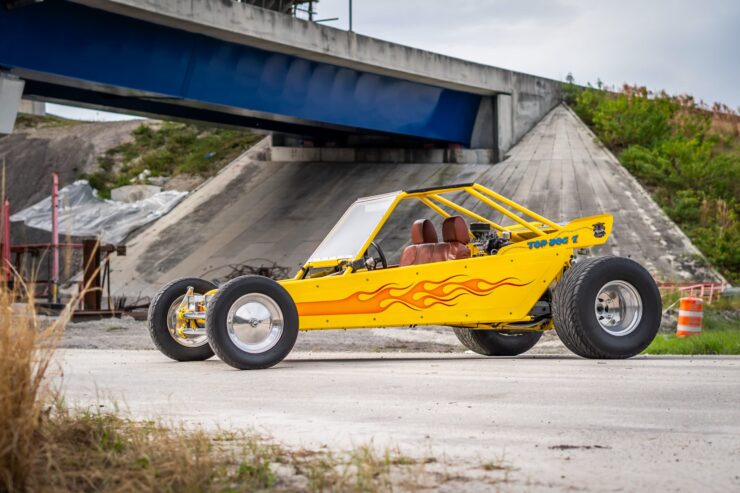
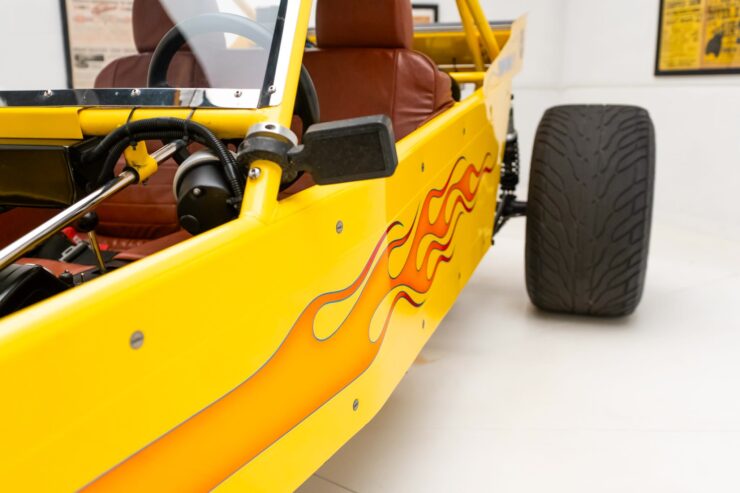
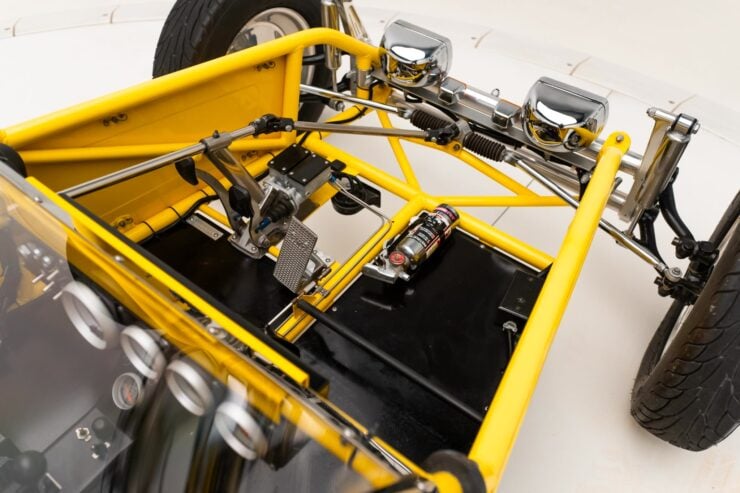
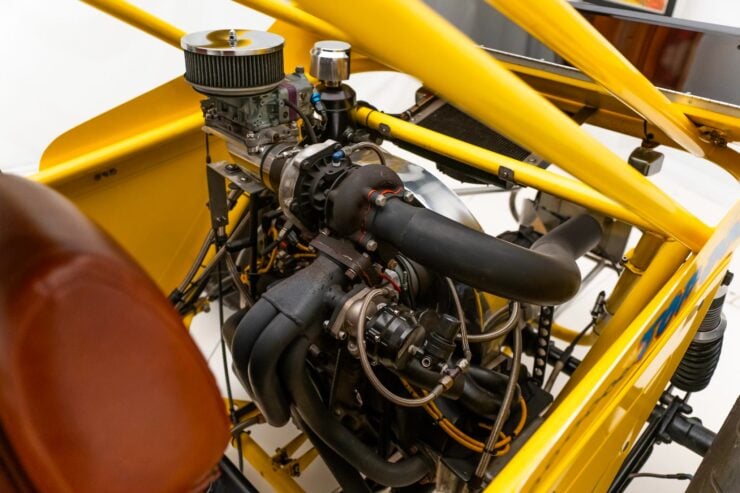
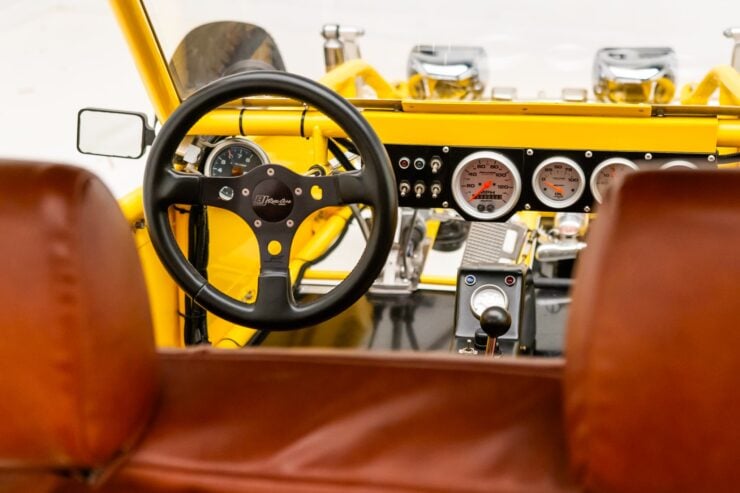
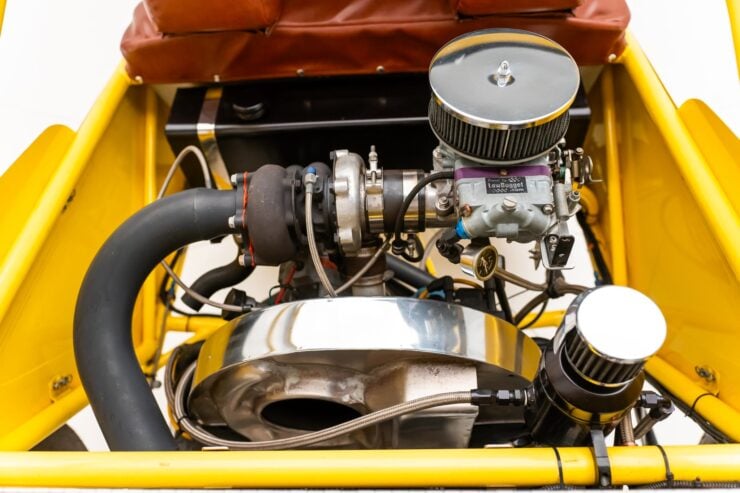
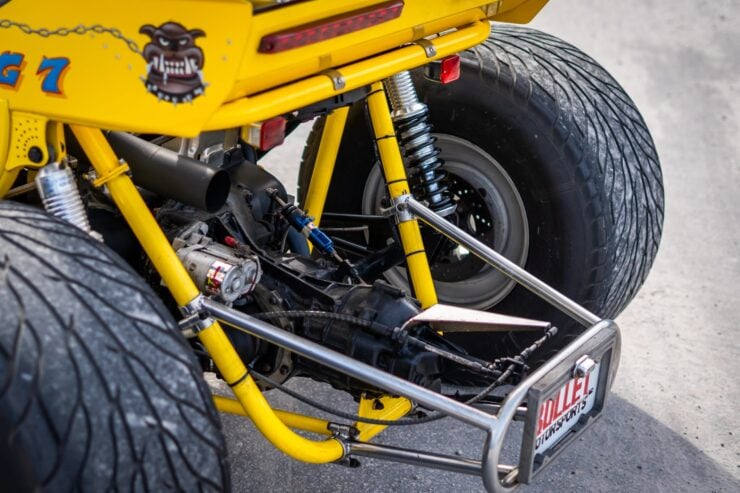
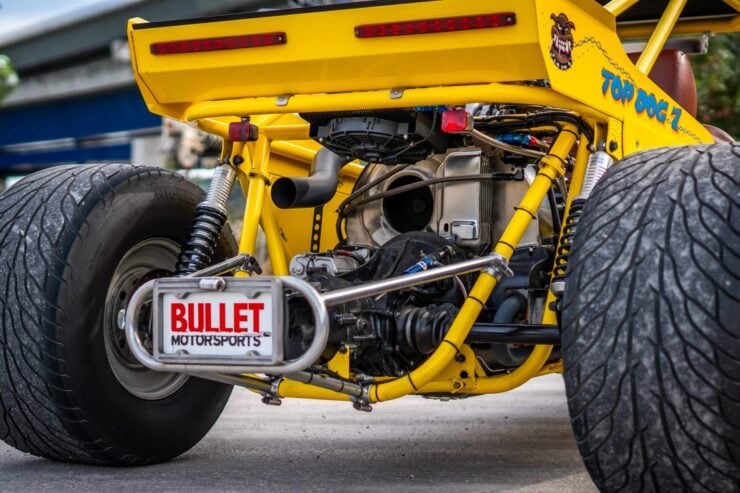
Images courtesy of Bring a Trailer

Articles that Ben has written have been covered on CNN, Popular Mechanics, Smithsonian Magazine, Road & Track Magazine, the official Pinterest blog, the official eBay Motors blog, BuzzFeed, Autoweek Magazine, Wired Magazine, Autoblog, Gear Patrol, Jalopnik, The Verge, and many more.
Silodrome was founded by Ben back in 2010, in the years since the site has grown to become a world leader in the alternative and vintage motoring sector, with well over a million monthly readers from around the world and many hundreds of thousands of followers on social media.

